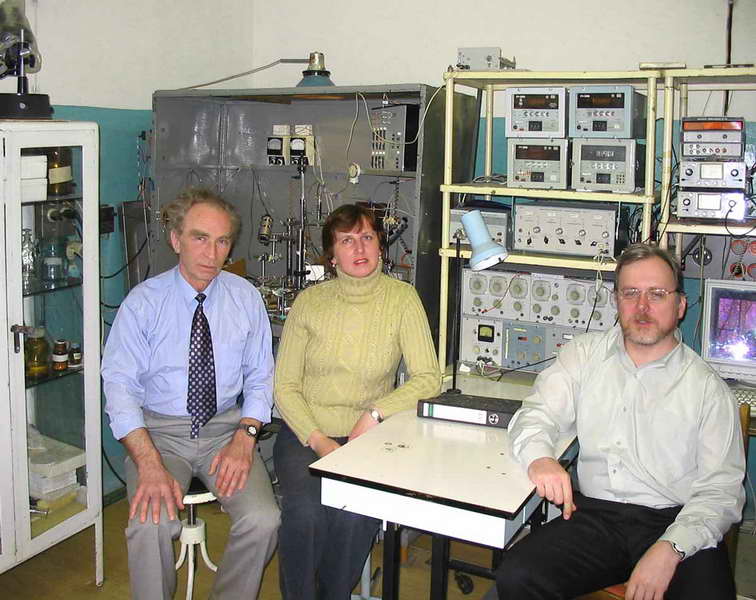The Laboratory was founded in 1950 by Prof. A.V. Soloviev. Since 1970 it was headed by Prof. P.K. Klimov, since 1988, by Medical Sciences Doctor S.A. Polenov, since 2011, by Ph.D. V.A. Zolotarev 
The main direction of the Laboratory investigations is analysis of mechanisms of neurohormonal regulation of microcirculation, secretion, and gastrointestinal tract motorics. A particular attention is paid to elucidating the role of the efferent impulse activity pattern in realization of physiological functions as well as the role of classical neurotransmitters and co-transmitters responsible for the character of the effector response at different nerve stimulation patterns. For this purpose, at the Laboratory, four computerized experimental installations were designed for (1) simultaneous quantitative estimation of gastric microcirculation and secretion; (2) quantitative estimation of gastric motorics, stretching, and adaptive relaxation; (3) simultaneous quantitative estimation of gastric secretion of acid, bicarbonate, and pepsinogen; (4) quantitative estimation of the tone of intestinal resistive and voluminous vessels. An important role is established not only of frequency, but also of the burst-type pattern of activation of sympathetic nerves in mechanisms of regulation of the gastrointestinal tract vascular tone and in phenomena of the autoregulatory escape and poststimulation hyperemia; participation of co-transmitters (neuropeptide, tyrosine, and nitrogen oxide) in these mechanisms is elucidated; an important regulatory significance of the intra-burst frequency and impulse burst duration and interfere intervals is show. When studying mechanisms of mechanisms of vagal regulation of gastric tone, it is established for the first time that the high-frequency burst pattern of vaguses little affects the cholinergic regulatory chain, but activates considerably the nitroergic chain, which provides for gastric relaxation. The uninterrupted regulatory pattern of activation, on the contrary, poorly affects the nitroergic regulatory chain, but activates markedly the cholinergic chain, which leads to an elevation of the gastric tone. Thereby the mechanisms are disclosed that provide the ability of vagus both to decrease and to increase the gastric tone. The secretory gastric function was revealed to be controlled more efficiently by single impulses of vaguses and to be of purely cholinergic character. The nitroergic mechanism of the tonic suppression of basal acid secretion is shown and the selective control is revealed of the gastric secretion of acid, bicarbonates, and pepsinogen by different populations of vagal C-fibers. On the whole, results of these studies decipher mechanisms of the nervous regulation and show that autonomic nerves are able to efficiently control visceral functions by changes of impulse activity patterns. These changes are realized at the effector level at the expense of classic neurotransmitters and selective releasing of certain co-transmitters.
A new direction of works of the Laboratory is study of effector function of afferent neurons in regulatory mechanisms of gastric secretion and microcirculation, study of mechanisms of action of weak irritants on gastric mucosa. Continued are investigations of role of nitrogen oxide and peptide co-transmitters in regulation of functions.
The priority achievement of the Laboratory (together with the Sector of applied mathematics) is mathematical model of regulation of the digestion process and its computer realization. The model includes 67 factors participating in regulation of digestion and more than 400 interactions revealed among them. Its testing has shown a good coincidence of the solved tasks with experimental data.
An innovation project of the laboratory is development and introduction in clinical practice of method of diagnostics of the state of the gastric mucosa protective barrier based on the Laboratory complex for simultaneous measurement of the gastric juice pH/CO2, which will allow obtaining new data on pathogenesis of the ulcerative disease and can potentially be realized in development of new approaches to therapy of complicated gastric ulcers. This development is at the stage of clinical trials. |